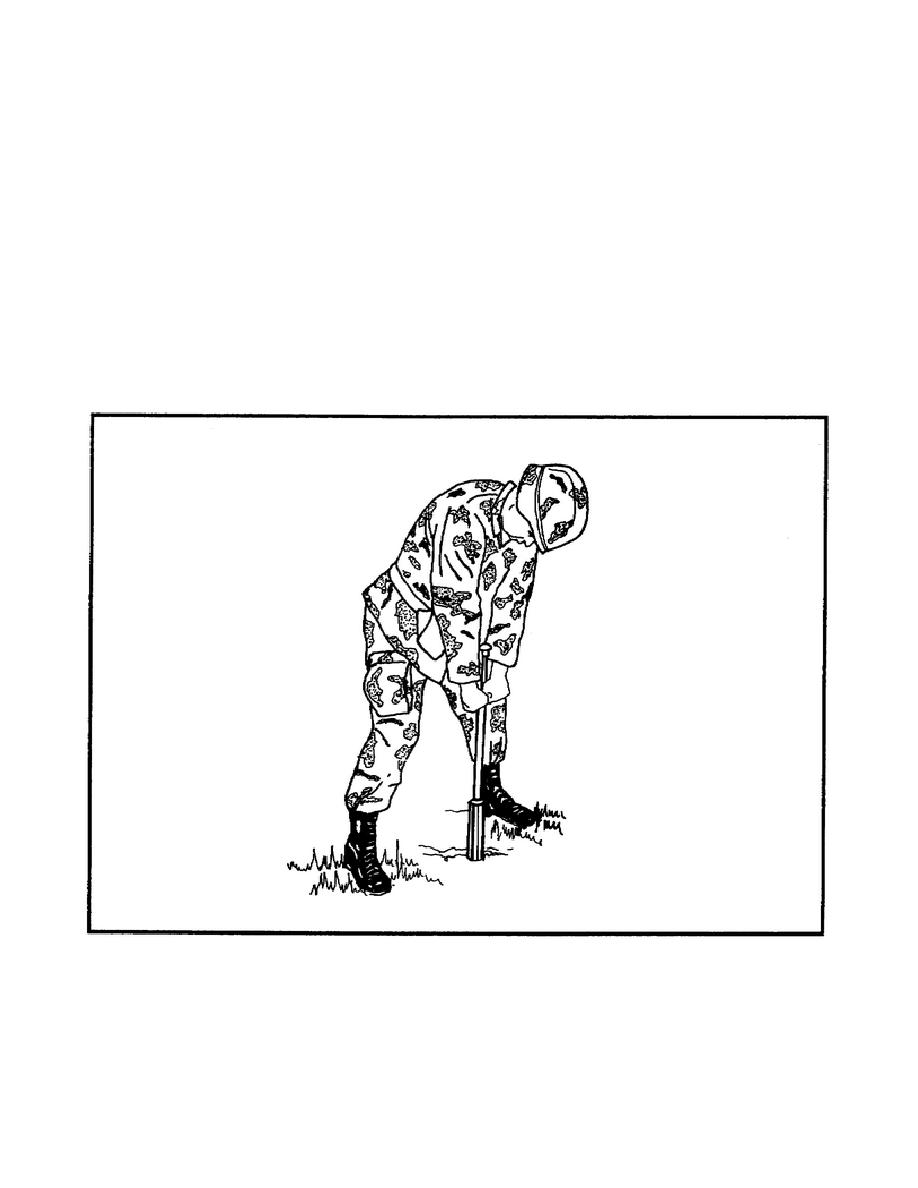
(b) Remolding Index (RI). The CI is a measurement of the shear strength of a soil in its undisturbed
condition; however, except for gravels and sands containing little or no fines, soils tend to experience changes in
shear strength due to the passage of traffic. In order to describe the changes that take place in fine-grained soils
and remoldable sands, the RI of such soils must be calculated. The RI is the ratio of the remolded soil strength to
the original soil strength.
The determination of a soil's RI begins by using a soil sampler to extract a 6-inch sample of soil from the critical
layer under study (see figure 3-11, page 3-28). With the locking handle in the unlocked position, the 2-inch
diameter soil sampler is pushed into the ground to a depth of 6 inches (see figure 3-13). The locking handle is
then switched to the locked position, and the 6-inch soil layer is extracted from the subsurface. If the soil within
the soil sampler tube was not removed from the critical layer in question, then the locking handle is unlocked and
the soil sample is discarded. Progressively deeper samples are extracted until the soil filling the sampler tube is
derived from the critical layer under study. It should be noted that, if or when an abnormal soil profile is
encountered, samples must be extracted from both the critical layer and the 6-inch layer directly underlying the
critical layer. Next, the locking handle is unlocked and pushed downward so that the sample is driven into the
remolding cylinder mounted on the base plate (see figures 3-11 and figure 3-14).
Figure 3-13. Extraction of a soil sample
3-31
EN5341


 Previous Page
Previous Page
